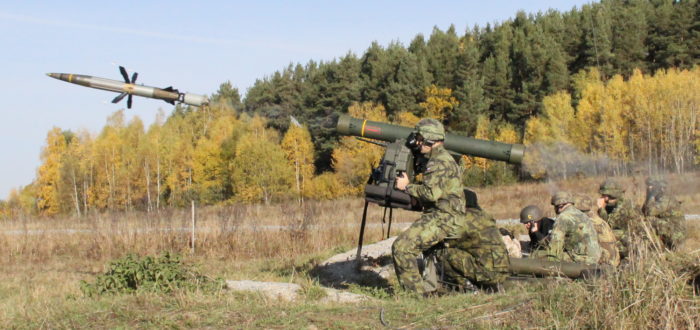ARES staff have updated two research notes for the Geneva-based Small Arms Survey, with a particular focus on improving technical clarity and precision. Both draw on earlier work from Survey staff. One research note examines man-portable air defence systems (MANPADS), whilst the other looks at anti-tank guided weapons (ATGWs). Both are types of guided light weapon found in current and recent conflict zones. Both research notes give brief descriptions of the broad types of weapons discussed, summarise development history, and touch on general principles of employment. Some attention is also given to production, export, proliferation, and use.
Research note 1, which examines MANPADS, notes that:
The initial development of MANPADS began in the 1950s. The earliest systems incorporated first-generation infrared (IR) ‘passive homing’ guidance systems that allowed the missiles to function as ‘fire and forget’ munitions … In the decades that followed, the subsequently updated 9 K32M Strela- 2 M (SA- 7b) in particular proliferated across the globe.
…
Work on the Soviet 9K34 Strela- 3 (SA-14 ‘Gremlin’) began in 1968, and it entered service six years later in 1974. Like their predecessors, these second-generation systems featured IR-seeking missiles, but unlike earlier ‘tail-chase’ systems, which were effective only when fired at the target from behind, the Stinger and SA-14 were capable of engaging targets head-on and from the side.
Research note 16, which examines ATGWs, notes:
These weapons were originally designed to disable armoured vehicles, but are frequently employed against other targets, such as personnel, light vehicles, and hardened structures. ATGWs are distinguished from unguided antitank weapons, such as the RPG-7 and M72 LAW, by the incorporation of targeting and guidance systems. The missiles fired by ATGM systems are precision-guided munitions that are capable of altering their course during flight in order to more precisely strike a target.
…
Three distinct generations of ATGWs have been developed since the 1950s, with each generation largely corresponding to advances in guidance methods.
Research Note 1 , Man-portable Air Defence Systems is available here.
Research Note 16, Anti-tank Guided Weapons is available here.
Remember, all arms and munitions are dangerous. Treat all firearms as if they are loaded, and all munitions as if they are live, until you have personally confirmed otherwise. If you do not have specialist knowledge, never assume that arms or munitions are safe to handle until they have been inspected by a subject matter specialist. You should not approach, handle, move, operate, or modify arms and munitions unless explicitly trained to do so. If you encounter any unexploded ordnance (UXO) or explosive remnants of war (ERW), always remember the ‘ARMS’ acronym:
AVOID the area
RECORD all relevant information
MARK the area to warn others
SEEK assistance from the relevant authorities

